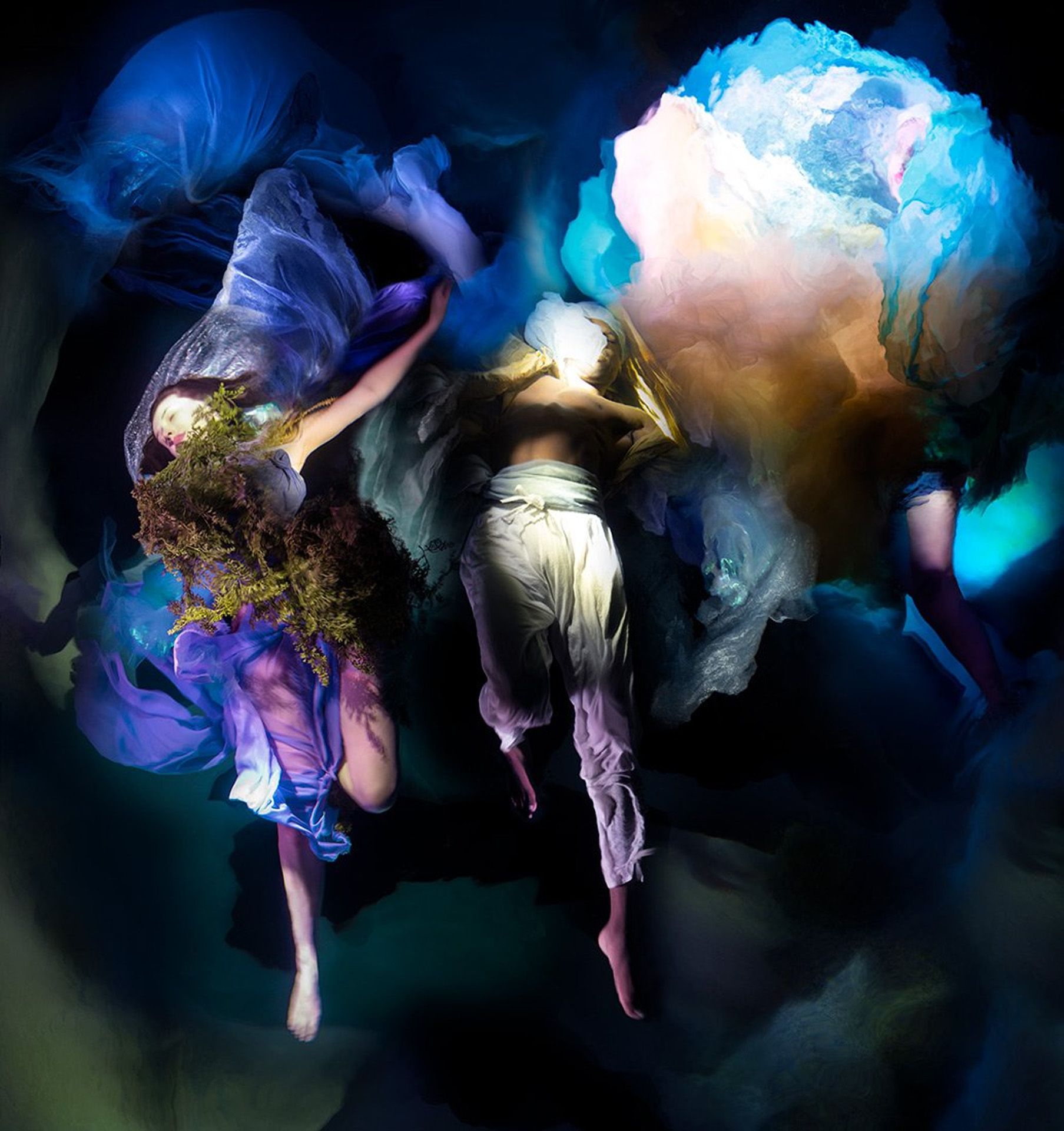IN AN ENCHANTING AND PROVOCATIVE NEW UNDERWATER SERIES, SONY WORLD OPEN PHOTOGRAPHER OF THEYEAR WINNER CHRISTY LEE ROGERS POURS OVER EXISTENTIAL QUESTIONS ABOUT ART, ARTIFICIAL INTELLIGENCE, AND THEFUTURE OF CREATION
BY BLUE SULLIVAN

It isn’t hard to understand the array of complicated emotions coursing through the new work of Christy Lee Rogers, an underwater fine art photographer and the Sony World Open Photographer of the Year. Titled “Humanity’s Romance with Artificial Intelligence,” the exhibit is a sophisticated inquiry into a question that has been pondered quite a bit recently: the increasing role of artificial intelligence in modern life and, specifically, in art. Art has, until very recently, been seen as the exclusive province of humanity, in all its passionately messy glory.
Rogers’ latest project focuses on probing for the far margins of where this new intrusion of AI into art may lead. The past 12 months have seen a rush of programs like Chat GPT into the world of “art” via an explosion of moderately competent fakes of the biggest stars in mainstream music (Drake especially has seen a great deal of “new music” via these programs), and a legion of attempted “new” short stories by famed authors no longer with us. Yet these bits of detritus seem less alarming because they are such clearly hollow inferiorities compared to the real article.
What Rogers describes in her new piece is a kind of understandable, alarmed-but-not-alarmist question regarding the future of art: when it is possible to sit in an armchair and have an algorithm transform the entirety of the past into easily identifiable (and therefore commodifiable) new permutations, will it even continue to resemble true art? As the artist noted recently when discussing this piece: “There’s nothing more invigorating than the act of creation.
It’s what makes us human and what makes us great. The journey is the real reward and the mistakes along the way de ne who we are.” us, in a future world where what we think of as actual creation (i.e. springing entirely from distinctly human creativity, with all its wonderful imperfections) is rare or, worse, nonexistent, are we spiraling toward the deformation or even the annihilation of art as we know it? With works such as “Humanity’s Romance with Artificial Intelligence,” Rogers is attempting to untangle where art may be going, whether we wish it to or not.
In her new collection, “Luminescence,” Rogers marries the different constituent elements of her art by playing with water, light, and movement. She described the muse behind “Luminescence” as “the power and beauty of human nature.” The work is a blur of vivid colors and beati c faces, perfect moments created by underwater models equipped with diving flashlights. The work has the feel of experimental cinema, with the faces and bodies intermingled with painterly explosions of blue, red, yellow, and green. It has such a fresh, visceral quality that one can almost imagine it as are futation of the artificial aesthetic future that “Humanity’s Romance with Artificial Intelligence” is grappling with. “Humanity needs to create to feel alive,” said the artist. “So if you give over that expression to AI, then you’ve deprived yourself of that much living.” With these two recent pieces, Christy Lee Rogers is memorably exploring both art’s present and its potentially disquieting future.
www.christyleerogers.com

